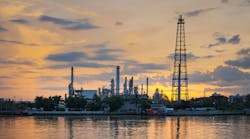Philly Fed: Manufacturing Activity Expanded Somewhat in June, but Growth Remained a Challenge
The Federal Reserve Bank of Philadelphia said that manufacturing activity rebounded in June after contracting in both April and May. The composite index of general business activity rose from -1.8 in May to 4.7 in June. It was only the second time in the past ten months that activity has expanded, highlighting the challenges for the sector seen over much of the past year. The better headline number might have been a more encouraging sign, mirroring data from the New York Fed yesterday, if it were not for the fact that many other key measures in the Philly Fed report were lower. For instance, new orders (down from -1.9 to -3.0), shipments (down from -0.5 to -2.1) and employment (down from -3.3 to -10.9) pulled further into negative territory. Moreover, the average employee workweek (up from -15.1 to -13.1) continued to shrink at a fairly fast clip, despite a slight easing in the pace of decline in June.
On the positive side, somewhat more manufacturers (44.4 percent) expect third quarter production to increase over second quarter levels than those predicting decreases (40.3 percent). More than half of those anticipating higher production attributed that gain to seasonal factors. In contrast, business conditions were the top reason cited by those predicting lower production, with 72.5 percent attributing a decrease to economic factors. For those seeing higher production in the third quarter, they will do so by increasing labor productivity (41.9 percent), expanding work hours (29.0 percent) and hiring additional people (22.6 percent). This data suggests a more-cautious approach to hiring, leaning more toward productivity growth from the existing workforce.
Looking ahead six months, manufacturers in the Philadelphia Fed district remain cautiously upbeat about activity in their economic outlook. The forward-looking composite index decreased from 36.1 to 29.8, but remained relatively elevated. Along those lines, more than 45 percent of respondents predict higher levels of new orders and shipments, with one-quarter predicting additional hiring and almost 20 percent planning more capital expenditures.





